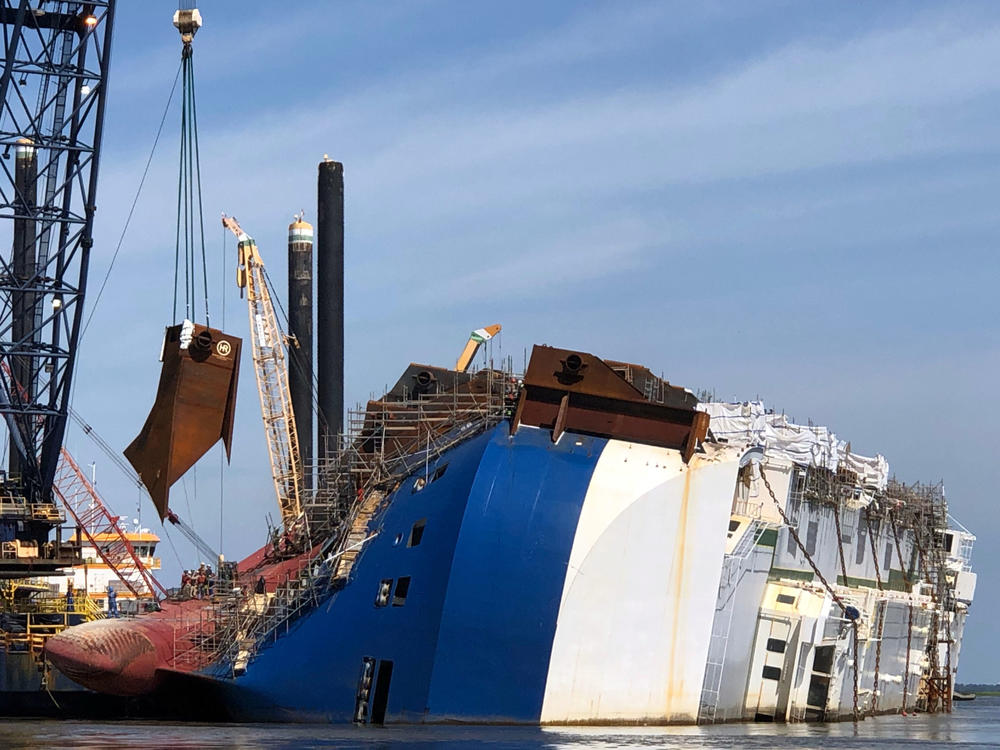
Caption
The Golden Ray remains on its side in the St. Simons Sound more than a year after it capsized there, now with lifting lugs attached to help with the eventual cutting up and removal of the vessel.
Credit: St. Simons Sound Incident Response photo

